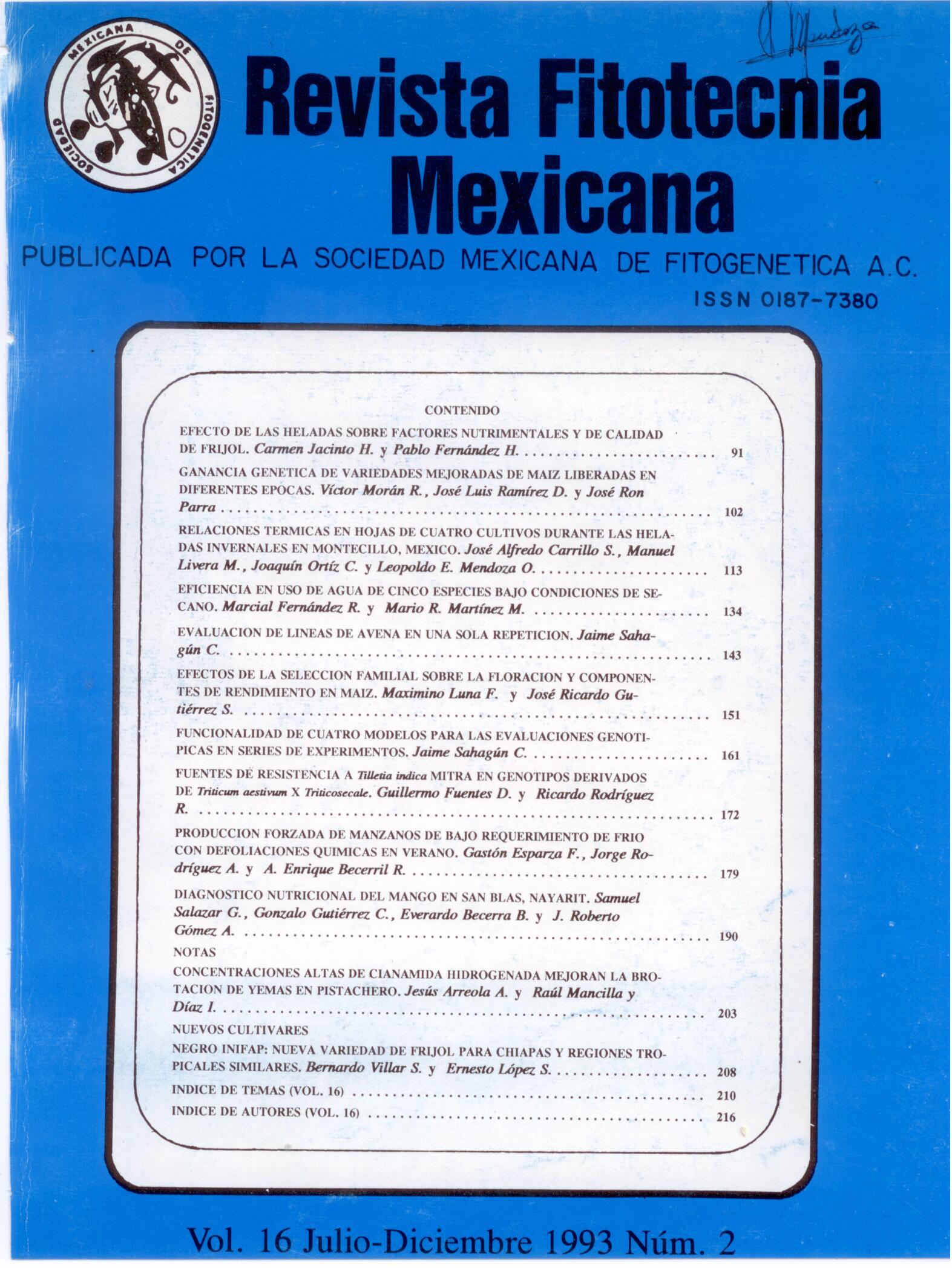LEAF THERMAL RELATIONS OF FOUR CROPS DURING WINTER FROSTS IN MONTECILLO, MEXICO
Main Article Content
Abstract
An investigation was carried out during the 1988-1989 winter in the Agriculture Experimental Station of the Colegio de Postgraduados at Montecillo, Texcoco, Méx., to study the relationship between leaf and air temperature changes during frosts, using seedlings of maize (Zea mays L.), wheat (Triticum aestivum L.), long bean (Vicia faba L.) and sunflower (Helianthus annuus L.). The experiment was planted on January 18th. Readings of leaf and air temperatures were hourly taken during two nights, with an infrared thermometer, 36 and 51 days after planting (DAP), from 20:00 h to 7:00 h of the following day. Leaf temperatures were always from 0.5 to 2.0°C lower than air temperatures. Temperatures of the narrow leaves of wheat and com were 1 to 2°C higher than temperatures of broad leaves of Vicia and Helianthus, showing a close association between leaf temperature and leaf dimension. At 36 DAP, minimum leaf temperatures ranged from -4.8 to -5.9°C and at 51 DAP from -3.8 to -5.5°C. In these two nights, the leaves remained for 5 to 7 hours with a temperature equal to or lower than 0°C. Corn did not survive the first frost. Wheat had the highest relative growth rate due to its high net asimilation rate.

